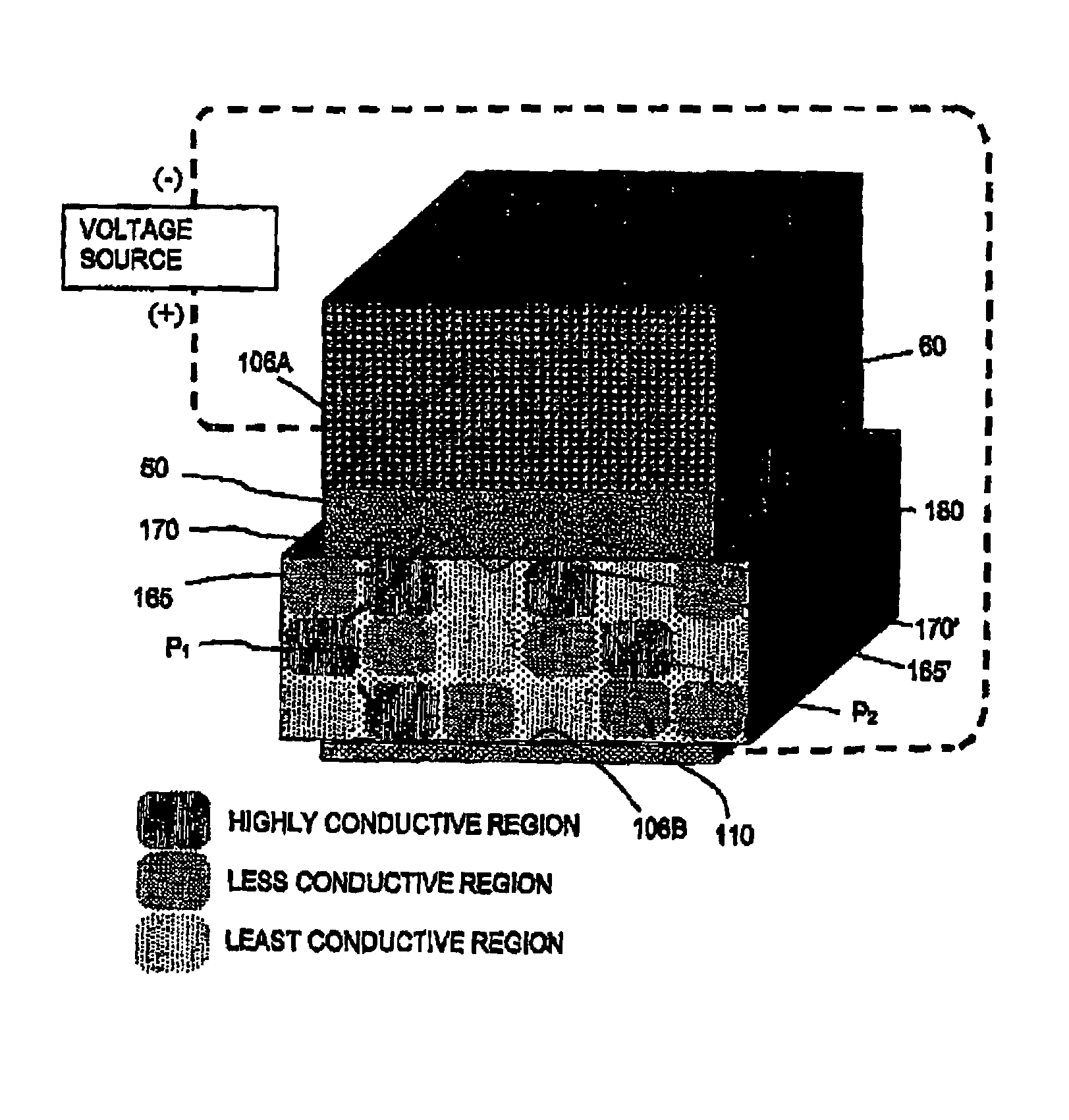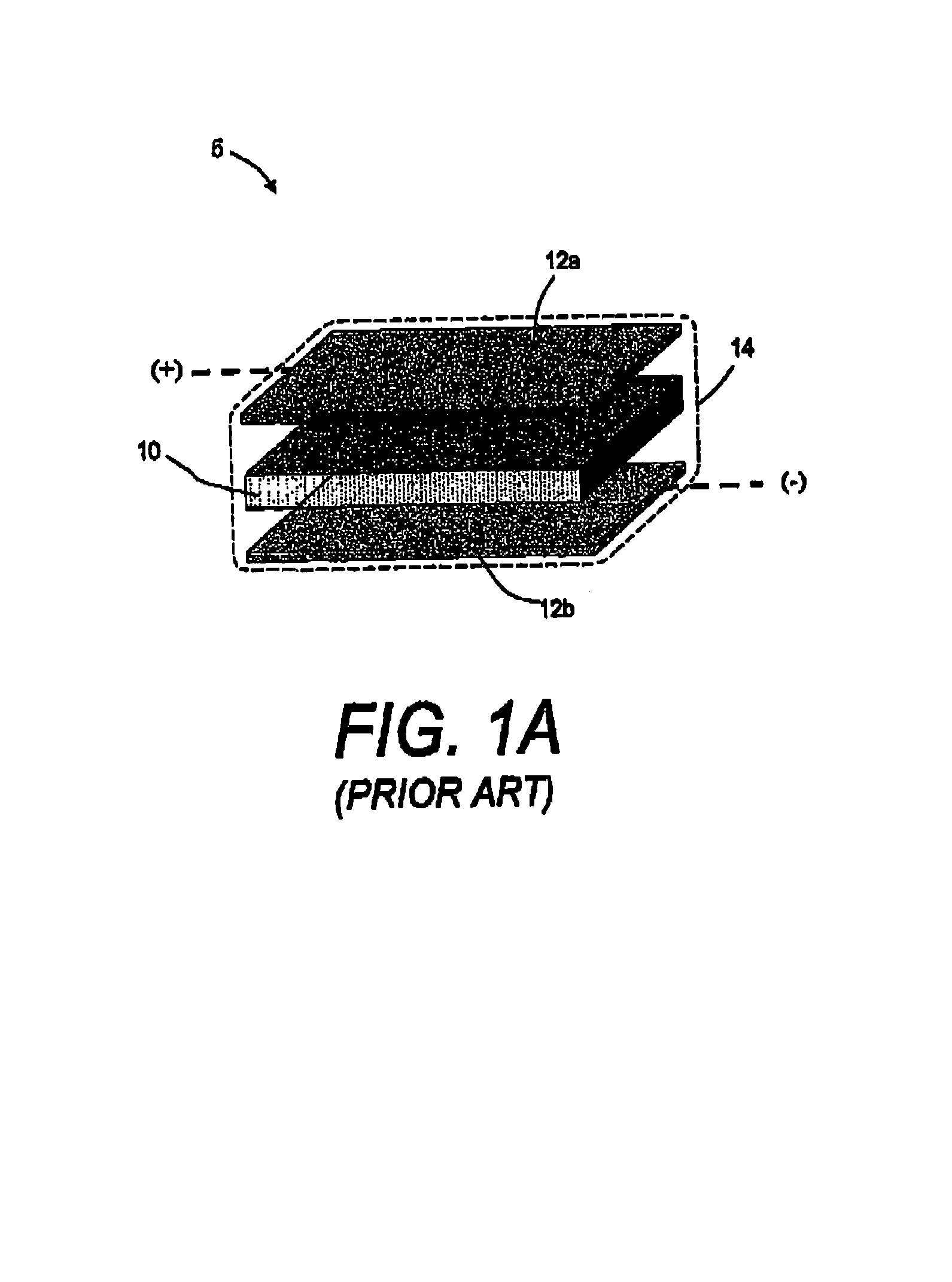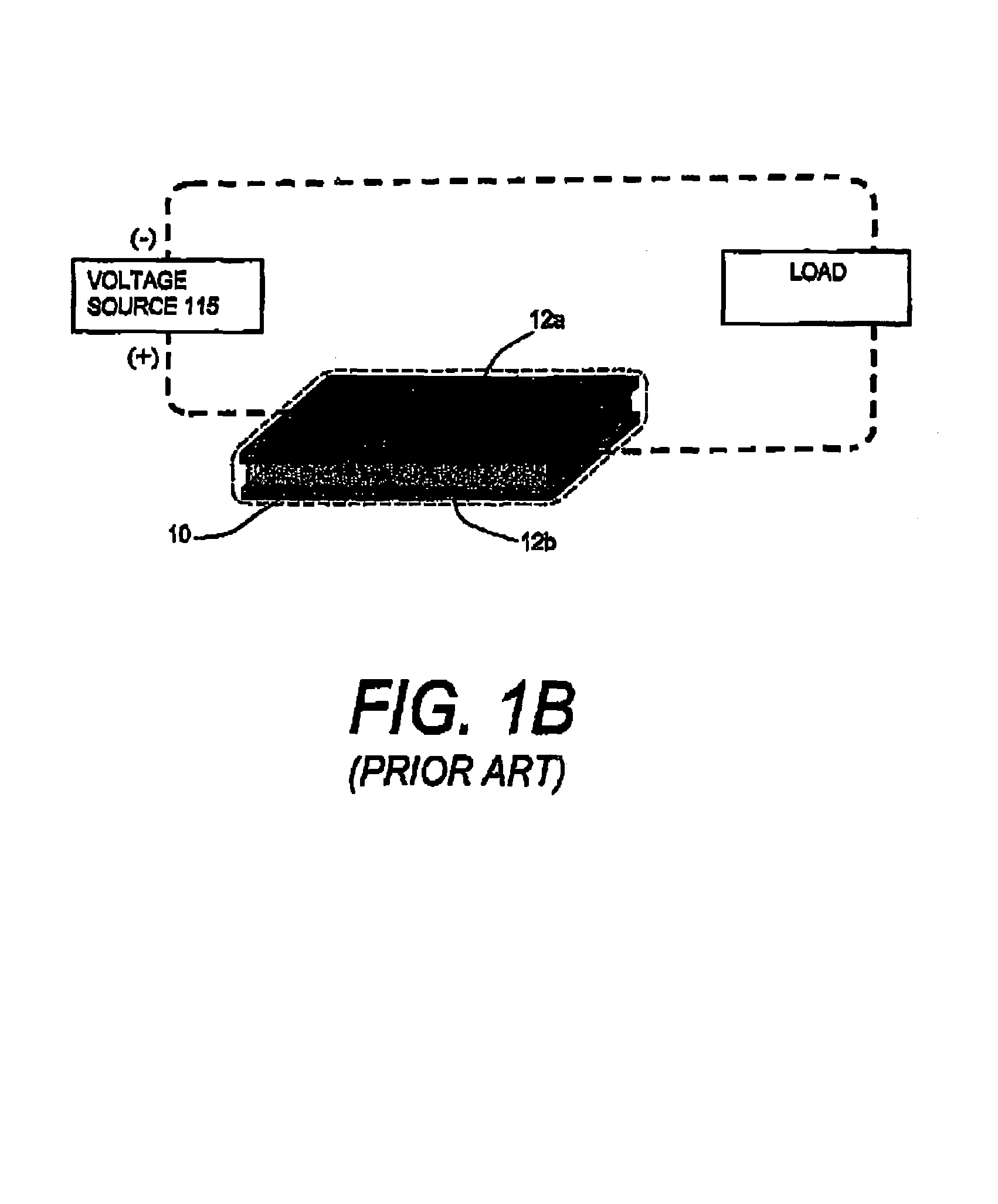Surgical sealing surfaces and methods of use
a technology of sealing surface and surgical method, which is applied in the direction of surgical forceps, electric/magnetic/electromagnetic heating, prosthesis, etc., can solve the problem that devices do not consider the problem of rapid switching from a conductive, and achieve rapid, repeatable switching, and nonlinear ptc effects. high
- Summary
- Abstract
- Description
- Claims
- Application Information
AI Technical Summary
Benefits of technology
Problems solved by technology
Method used
Image
Examples
Embodiment Construction
[0034]Operational principles of polymeric PTC devices for sensing surfaces. Various embodiments of the invention provide polymeric compositions that exhibit positive temperature coefficient of resistance (PTC or PTCR) effects. Embodiments also provide devices and systems which utilize those PTC compositions in various applications including for example, electrosurgical, telecommunication, sensing and related applications. Particular embodiments provide PTC-based electrosurgical instruments systems and devices configured to provide: (i) high spatial resolution in thermal sensing functionality and (ii) contemporaneous pixelated current-limiting functionality. Embodiments of such PTC based systems herein are referred to at times as “dual function” PTC systems and / or devices.
[0035]Describing a material as having a positive temperature coefficient (PTC) of resistance simply means that the resistance of the material increases as temperature increases. Many metal-like materials exhibit ele...
PUM
| Property | Measurement | Unit |
|---|---|---|
| temperature | aaaaa | aaaaa |
| potential current | aaaaa | aaaaa |
| densities | aaaaa | aaaaa |
Abstract
Description
Claims
Application Information
 Login to View More
Login to View More - R&D
- Intellectual Property
- Life Sciences
- Materials
- Tech Scout
- Unparalleled Data Quality
- Higher Quality Content
- 60% Fewer Hallucinations
Browse by: Latest US Patents, China's latest patents, Technical Efficacy Thesaurus, Application Domain, Technology Topic, Popular Technical Reports.
© 2025 PatSnap. All rights reserved.Legal|Privacy policy|Modern Slavery Act Transparency Statement|Sitemap|About US| Contact US: help@patsnap.com



